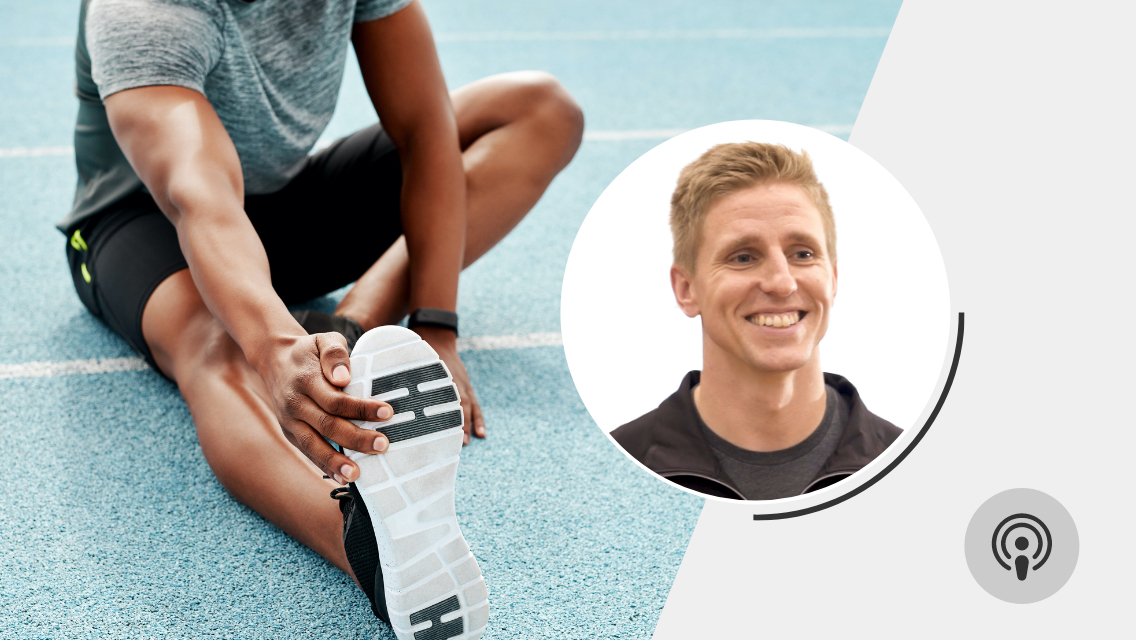One definition of self-care reads, “The practice of taking an active role in protecting one’s own well-being and happiness, especially during times of stress.” If that doesn’t describe something we all could use a bit more of in our lives, then I don’t know what does.
One great tool to have in your self-care toolbox is a percussive device, also often referred to as a massage gun. This isn’t likely one of the self-care strategies you’ve often heard suggested before, but let me explain. Just think about some of the things many of us struggle with on an ongoing basis:
- High stress levels
- Hours of daily screen time
- Lack of exercise and movement
- Low quality sleep
These factors can lead to a variety of undesired symptoms, including inflammation, poor posture, muscular tightness and imbalances, general pain, elevated cortisol, and even bodily injury if left unchecked.
For relief, many look to a massage therapist or chiropractor. While those are great and important parts of a comprehensive wellness plan, having a consistent strategy to use more often — even daily — in your own home can bring your results to the next level.
This is where percussive therapy devices, such as the Hyperice Hypervolt, can come in to help. Learn more about the devices and how you can best use them to find relief — and even aid your performance.
How it Works
The Hyperice Hypervolt family of percussive devices is uniquely designed to massage away stress and tension by loosening muscle knots and targeting fatigue and stiffness.
As a result, it may reduce pain while supporting flexibility and range of motion through movements. Each device offers various percussive speeds to help you adjust each session to your needs on that given day.
Here’s how the therapy can benefit some of the other ailments I mentioned above:
Increased stress and lower quality sleep: High stress elevates the sympathetic (fight or flight) side of your nervous system. The device works to increase your parasympathetic (rest and digest) side, which, in turn, lowers the sympathetic.
Added screen time: With a phone, you may experience tightness in your hands or forearms. With a computer, you may notice poorer posture, such as with a forward head or rounded shoulders, which can shorten and tighten your front-body muscles, and lengthen and weaken your back-body ones. You can work to reverse that using the device, as well as loosen any tight muscles.
Decreased exercise and movement: This can lead to more muscular imbalances as well as a lack of blood flow, which the device can help increase circulation of.
Using the device for just five to 10 minutes a day can help provide positive effects.
What can I use percussive therapy for?
These are the three most common areas I recommend clients consider using a percussive device to help with:
1. Muscular Dysfunction or Trigger Points
Muscular dysfunction can occur from increased stress, a lack of movement or exercise, poor posture, or non-optimal desk ergonomics. Over time, this can lead to overcompensation and injury. When dysfunction occurs, it’s possible for trigger points to develop in your muscle tissue. These feel like knots or bumps.
Some trigger points are very sensitive, especially if you press on them. However, many trigger points don’t cause pain their specific area at all, but rather referred pain in other areas of the body. The good news is, these referred locations typically show in consistent places person-to-person, so you can use resources to identify where they might be.
I’d recommend the book Myofascial Pain and Dysfunction: The Trigger Point Manual, or you could simply search for “trigger point referred pain chart.”
When using a percussive device on an area with a trigger point, the tool will typically bounce off the skin differently than places where the tissue is normal.
When using the device, a good rule of thumb is to put pressure on the trigger point for 10 to 15 seconds, then circle around it, and finish by putting pressure directly back on it again.
2. Warm-Up and Recovery
When used pre-workout, percussive devices can help reduce the risk of delayed onset muscle soreness, or DOMS, following exercise. They can also help increase your blood flow, body temperature, and active and passive control of range of motion to the areas you use it on.
Similar to pre-workout, when used post-workout for recovery, the device can also increase blood flow. This is beneficial as during a workout you can get tight and see a lack of oxygen and buildup of lactate, and if you can circulate blood faster, it helps supply your muscle tissue with the nutrients it needs to recover faster.
One specific feature found in certain models of Hypervolt products is a Bluetooth-connected app — called HyperSmartTM — that links to the device to provide you expert, step-by-step guidance on how to use the device to support a warm-up and cool down.
Generally, warm-ups use shorter durations at higher speeds, while cool downs often include lower speeds with longer durations.
3. Rest and Sleep
Because of the positive impact to the parasympathetic nervous system, percussive devices can be a great tool to help with improved rest and sleep, which can also lead to increased mental and muscular recovery.
I love recommending a 10-minute routine within an hour or so of going to bed. Since you don’t want a high level of stimulation prior to going to sleep, consider using slow speeds and lighter pressure down your neck and back, plus any other areas that may need support (such as your forearms if you’re at a computer all day).
Taking advantage of tools to help decrease your stress, benefit your sleep, and increase your muscle function is an easy and accessible way to improve the day-to-day quality of your life. If you’d like to explore the Hypervolt devices we use most often with clients, you can find them here.






This Post Has One Comment
[…] -Massage- How percussive therapy can benefit your health […]
Comments are closed.